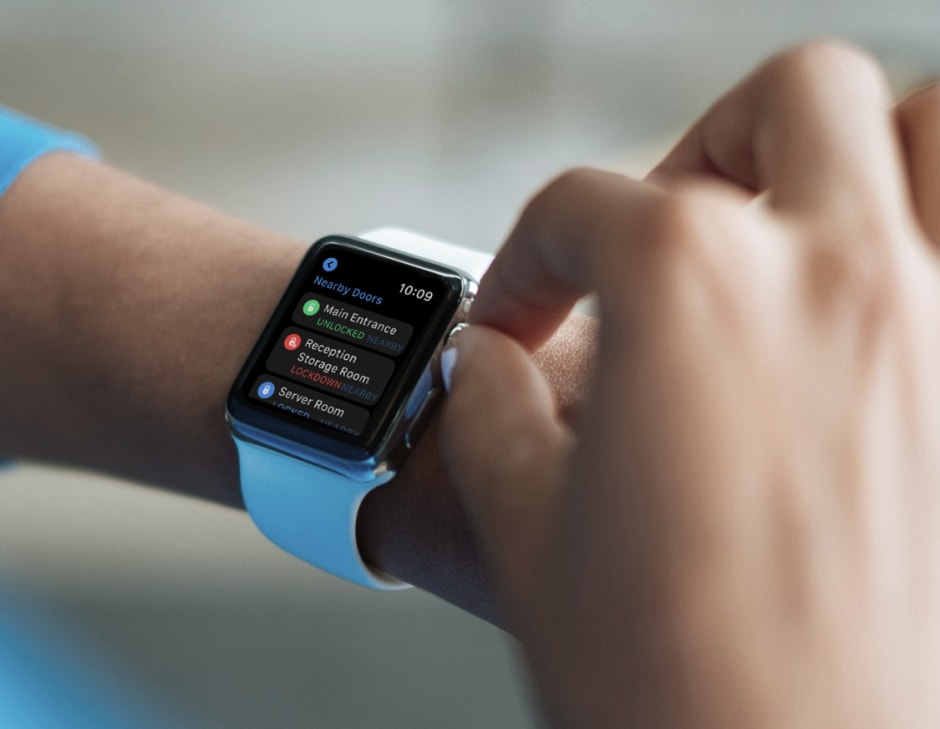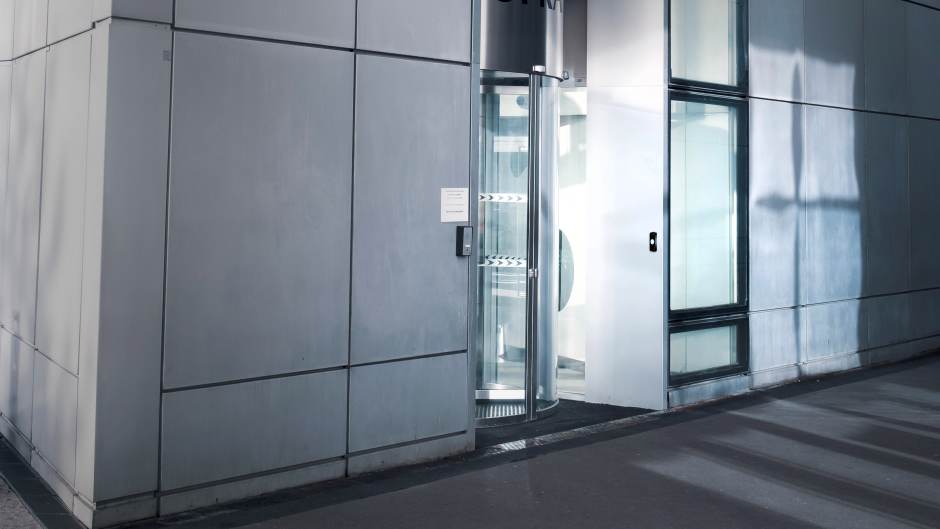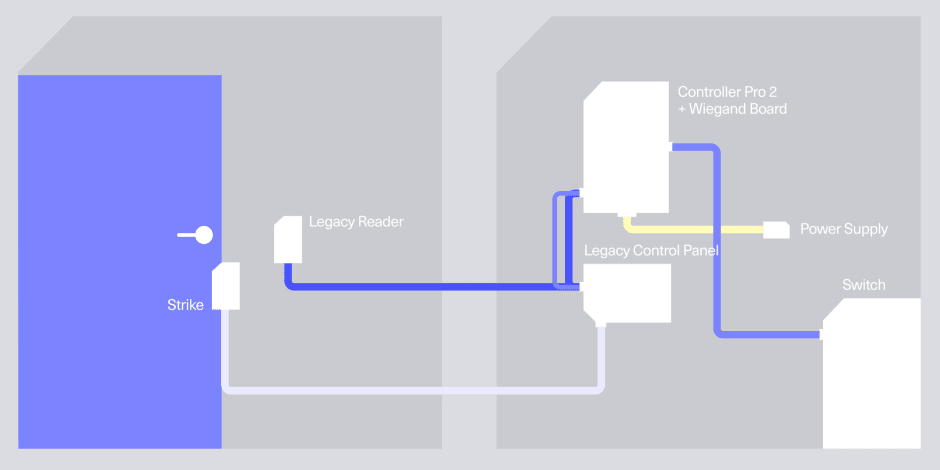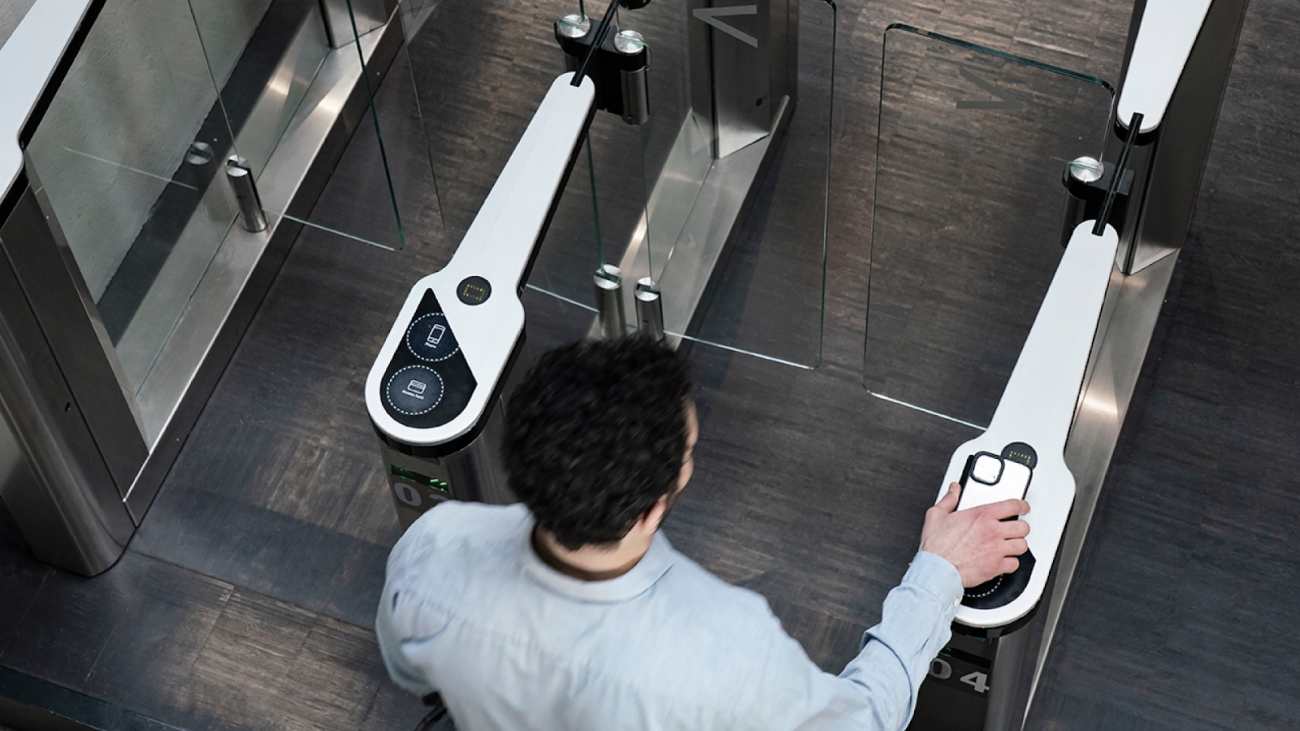Optimizing day-to-day operations and maintaining security are essential for any property. To safeguard your premises, protect tenants, and ensure smooth everyday movements, you need an all-in-one access control solution that surpasses traditional security measures.
What is property access control? #
Property access control encompasses regulating and managing entry and exit to a property. It ensures authorized people can swiftly access the property and its secured areas while keeping unauthorized individuals out.
In this digital age, property managers can hardly rely on traditional access control methods like locks and keys. More advanced technologies, like mobile access and biometric scanners (like fingerprint or facial recognition), are even replacing the common access systems like keypad entry codes, key cards, and fobs.
Most modern property access systems authenticate and record the identity of people entering the property and enforce access restrictions based on the predefined rules and permissions set by the admin.
How to manage property access? #

Modern property access systems offer flexibility and customization, and you should take full advantage of it to prevent security breaches. You can start by defining user groups, access levels, and permissions based on roles or responsibilities. Use the ‘Principle of least privilege’ to ensure authorized people can only access the spaces they need.
Utilize global, centralized access management to streamline operations when managing multiple properties. Use your system’s dashboard to manage all properties, unlock doors, and address suspicious access events, even on the fly.
To stay compliant, maintain accountability, and mitigate, track access events, and set notified about critical ones.
Integrate access control with your other security and building management systems for comprehensive, enhanced security, improved visitor management, and streamlined operations.
Most common types of property access control systems #
The most common types of property access control systems are:
- Physical locks and key access systems: Rarely used in property access control due to the limited functionality, lack of flexibility, and missing audit trail capabilities.
- Keypad access systems: Simple to use and usually cost-effective, they require users to enter the right PIN code on a keypad to gain entry. The possibilities for PIN code sharing or the ease for wrongdoers to simply observe the PIN make keypad systems a low-security option.
- Card and fob access systems: Users present their proximity card, smart cards, or a fob that contains electronic credentials to a card to a reader, which authenticates the credential and grants access if authorized. They offer the ability to track user activity through audit trails but fall behind on convenience and ease of management, given the tendency of some users to forget, misplace or lose their credentials.
- Biometric access systems: Utilizing unique biometric traits, like fingerprints, palm, face, and iris, to authenticate individuals, biometric systems provide a high level of security but often are more expensive to implement.

- Mobile-based access systems: Leveraging smartphones or wearables as digital credentials, mobile access systems offer convenience to the users while enabling admins to remotely manage access and allow flexibility to customize the system to their needs.
- Integrated access systems: Combining multiple access methods, such as mobile, card readers, and keypad entry, into a unified solution, these systems provide enhanced security, flexibility, and scalability.
Most commercial properties, like office buildings, flex and coworking spaces, retail centers, and business parks have shared entrances. These are the common entry points that provide access to the multiple businesses or units within the property.
Serving as centralized access hubs often managed by the property owner or a property management company, shared entrances allow tenants, visitors, and customers to reach different offices, retail spaces, or facilities within the property. Usually serving as a starting security point, these entrances utilize access control systems to ensure authorized entry and maintain a safe and controlled environment.
Landlord access to property #
Property owners and landlords have the rights and privileges to access leased premises. Commercial lease agreements provide more flexibility for negotiating access terms than residential properties.
Often defined in the lease agreement, the landlord access provisions encompass the tenants’ specific operational needs and confidentiality concerns. Since landlords are responsible for maintaining common areas and providing necessary repairs, they choose and manage the shared access control system.
On the other hand, tenants have the right to enjoy uninterrupted use of their leased premises. Given that they often install their own access control system to secure their spaces, convenient access flow is rarely the case, considering they need two different sets of access credentials to enter their workplace.
Thanks to Kisi, this no longer has to be a challenge, book a call with our security experts or read on to see how Kisi bridges that gap enabling smooth access throughout the building.

Private property with public access #
Even though they are owned and controlled by private entities, some properties allow public entry for various activities. For instance, some office buildings have public access areas, like retail stores, restaurants, or other businesses located within the building, usually situated on the ground floor.
In this case, the property owners or managers are responsible for property maintenance and visitor safety. Striking a balance between public access and the owner’s and tenant’s interests and safety is crucial for the success of these spaces.
Property owners need to consider modern access systems, like Kisi, to manage the flow better, enforce access rules, and ensure the property’s continued operation while ensuring public and tenant satisfaction.
Vehicular access to property #
Effective vehicle access is essential for enhanced security, smooth operations, positive user experience, and compliance in commercial properties. To ensure authorized vehicles can seamlessly enter and exit the property, property managers utilize vehicle access control devices to facilitate quick access and often verify people’s identities.
Gates and physical barriers, usually equipped with electronic access control systems, are the most common choice. Other measures include designated visitor parking, license plate recognition systems, security personnel, and traffic flow management.
Proper vehicle access control promotes safety, efficiency, and a seamless experience for property owners, tenants, and visitors.

While essential, access control systems often raise security and convenience-related questions from tenants in properties with shared entrances. Most companies want to enhance security and enable their employees to have a smooth, enjoyable experience when coming to the office. Carrying two sets of credentials just to enter the office is not convenient and might contribute to tailgating incidents.
If landlords and property managers are eager to accommodate tenants and implement the access control system of their choice at the shared entrance, they might end up with dozens of different access readers at the entry door. More importantly, they won’t have full control of the people entering their property whose safety they’re responsible for.
Kisi’s latest solution takes care of this problem. Now, Kisi users can enable mobile and card unlocks with Kisi on top of the existing access solution the property manager is using. This means that they can also use their existing Kisi office credentials to unlock the door of the shared entrance using the landlord’s existing access reader.
All the landlord has to do is connect the Kisi Controller Pro 2’s Wiegand board to their legacy controller. The property manager can use Kisi as a shared system of record. Talk to our security experts about how easy it is to install Kisi at the shared entrance door or explore the various deployment options Kisi offers.
How to choose the right access property solution? #
Choosing the right property access control solution requires careful consideration of your setup and needs. Kisi is a flexible access solution that adapts to your requirements, regardless if you’re just starting or already have a solution in place.
An intuitive dashboard with centralized remote access management, top-rated mobile app, customizable user groups and access schedules, extensive product documentation and support, and various access methods and integrations are just part of the things Kisi offers, and you should consider.
The different deployment options ensure enhanced security and future-proof your system while enabling cost-efficient migration. They also seamlessly solve the shared entrance challenge.
Need help in choosing the perfect access setup for your property? Contact us.

Vera Eftimovska
Marketing Campaign Manager at Kisi, blends her psychology background with hands-on experience in access control and workplace security. Passionate about how technology and human behavior intersect, she shares insights that help businesses build resilient, future-ready, and security-driven workplaces.



